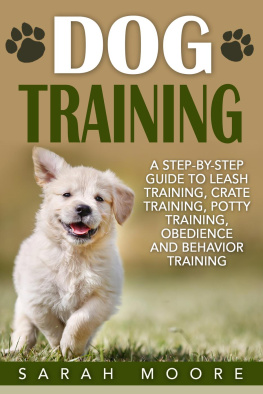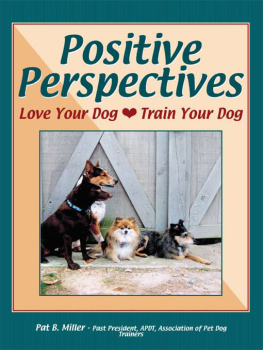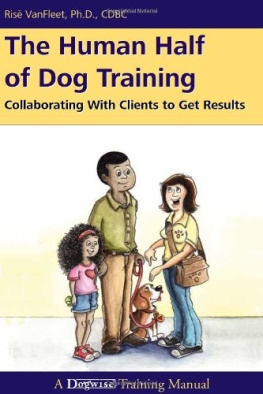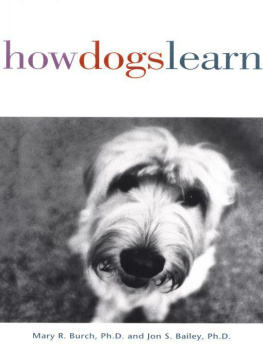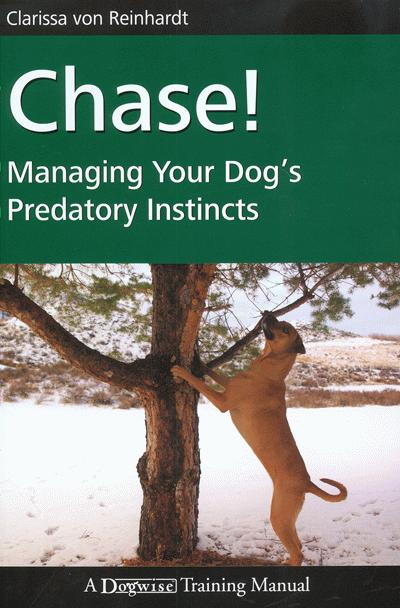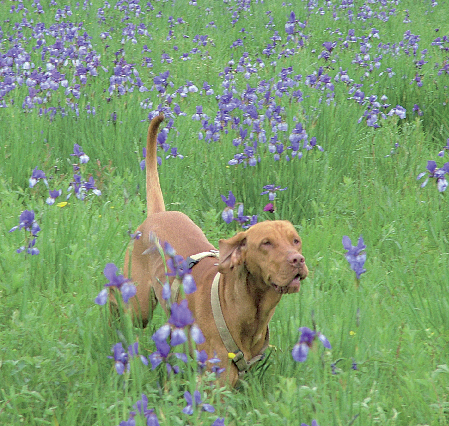Clarissa von Reinhardt - Chase!: Managing Your Dogs Predatory Instincts
Here you can read online Clarissa von Reinhardt - Chase!: Managing Your Dogs Predatory Instincts full text of the book (entire story) in english for free. Download pdf and epub, get meaning, cover and reviews about this ebook. year: 2010, publisher: Dogwise Publishing, genre: Detective and thriller. Description of the work, (preface) as well as reviews are available. Best literature library LitArk.com created for fans of good reading and offers a wide selection of genres:
Romance novel
Science fiction
Adventure
Detective
Science
History
Home and family
Prose
Art
Politics
Computer
Non-fiction
Religion
Business
Children
Humor
Choose a favorite category and find really read worthwhile books. Enjoy immersion in the world of imagination, feel the emotions of the characters or learn something new for yourself, make an fascinating discovery.

- Book:Chase!: Managing Your Dogs Predatory Instincts
- Author:
- Publisher:Dogwise Publishing
- Genre:
- Year:2010
- Rating:5 / 5
- Favourites:Add to favourites
- Your mark:
Chase!: Managing Your Dogs Predatory Instincts: summary, description and annotation
We offer to read an annotation, description, summary or preface (depends on what the author of the book "Chase!: Managing Your Dogs Predatory Instincts" wrote himself). If you haven't found the necessary information about the book — write in the comments, we will try to find it.
Almost every dog has some degree of prey driveits in his genessome more than others. You may experience it when your otherwise well mannered dog suddenly takes off chasing after a rabbit, squirrel, or a jogger. The old approach to solving this problem involved the use of corrective devices like choke chains and electronic fences. A better approach includes training and management techniques that reward your dog for choosing to focus on and stay near you, the owner.
Clarissa von Reinhardt has been working on the issue of how to deal with unwanted predatory behavior for many years. In this fascinating and inspiring book, she takes the readers step by step through her training methods, inviting them to learn more about a dogs complex spectrum of behavior, and ultimately to maintain as much control as possible over the urge to chase prey.
What reviewers are saying...
DOGS IN CANADA
Dogs with a strong instinct to chase things can be frustrating to manage. A dog that suddenly takes off after anything he considers preysquirrels, joggers, bikes, carscan be a danger to himself, his owner, others and whatever hes chasing. Von Reinhardt describes predatory behaviour and takes the reader step by step through her training methods, including such intriguing techniques as the sausage tree, and addresses the causes of failure in training. Chase! delves into a fascinating and complex behaviour, and offers a training program that leads to as much control as possible over the urge to chase, while rejecting the use of aversive stimuli.
THE APDT CHRONICLE OF THE DOG
This book is the how-to manual for owners dealing with dogs who have high predatory instincts. I have had several clients and friends approach me with this issue, and it is one of the most frustrating for me (and for them!) to deal with. The book is geared toward pet dog owners, not trainers. The author does an excellent job explaining what prey drive is, where it comes from, and that it is a natural instinct within dogs. I appreciated that her problem-solving refers to management of behaviors, and does not promise to cure the problem. She comes down quite hard on anyone recommending the use of aversive methods to change this behavior. There are several really interesting exercises outlined in the book that I am eager to try, including communicative walks and a sausage tree. There are also a lot of the exercises you would expect her to recommend, including sit/stay and several variations on recall. On the one hand, I like the idea of offering a number of different exercises whose ultimate purpose is to move the dog in the direction you want him to go (usually toward you!), so I appreciate that there are a variety of recall exercises available so you arent simply calling your dog with come every time. On the other hand, I wondered if having this many seemingly different exercises to master might feel daunting for an owner, when in truth a really dynamite recall would suffice.
Clarissa von Reinhardt: author's other books
Who wrote Chase!: Managing Your Dogs Predatory Instincts? Find out the surname, the name of the author of the book and a list of all author's works by series.



